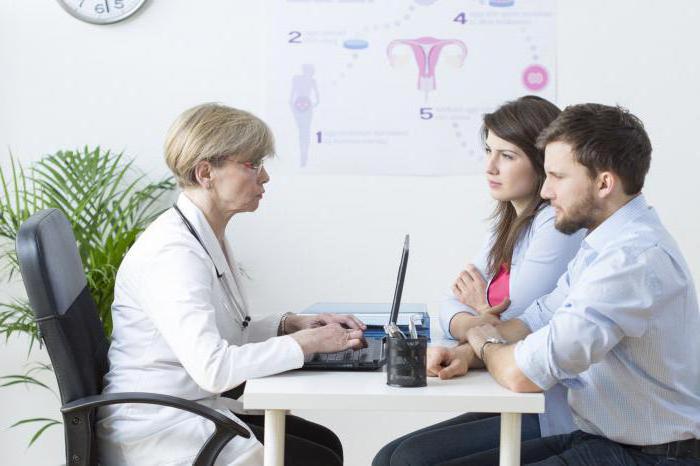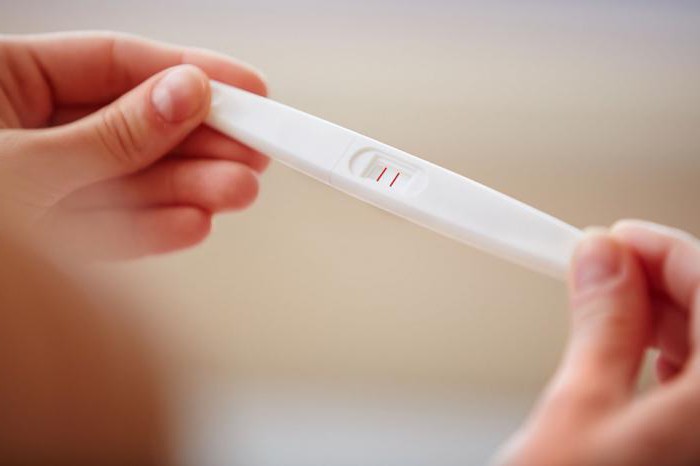Resistant ovary syndrome is the least studied form of female pathology. Most often, this disease appears in 25–35 years. It is characterized by a temporary absence of menstruation with an increased level of gonadotropic hormones of the pituitary gland.
Definition

The essence of the disease is that the ovaries stop performing their immediate function. Most often, the disease progresses and ends with menopause. The peculiarity of the pathology is manifested in infertility and the absence of the menstrual cycle. At the time of the disease, various forms of amenorrhea often develop. During this period, an elevated level of gonadotropic hormones of the pituitary gland is noted, since the body still tries to start the ovaries. However, they do not start to work, as insufficient amounts of progesterone and estrogen are released. The first time they talked about the problem in 1959, then scientists described the symptoms of resistant ovary syndrome. But nevertheless, this topic remains poorly understood to date, and the reasons for its appearance are still not fully defined.
Kinds
There is no clear classification of this pathology in medical directories. Although some experts identify three options for the development of the disease:
- Genetic predisposition of defects in the follicular apparatus.
- The automatic nature of the appearance - at the time of antibody production, the sensitivity of follicle-stimulating hormone receptors is blocked.
- With the use of cytotoxic drugs and immunosuppressants.
Symptoms

Resistant ovary syndrome can most often be determined by the listed ailments:
- high numbers of LH (luteinizing hormone) and FSH (follicle-stimulating hormone) and low estradiols;
- amenorrhea - lack of menstruation;
- exhaustion of the vaginal mucosa and vulva;
- ovaries with a large number of follicles with normal sizes and thin uterine endometrium;
- transfer of severe viral infections and stress;
- menstruation begins to become irregular, and then completely disappears.
The development of the disease most often occurs after 5-10 years from the first cycle. All subjects noted that hot flashes to the head were observed at night and in the afternoon. Pain in the lower abdomen appears spontaneously, for no reason. Most often, women who have resistant ovary syndrome have painful menstruation and postpartum complications.
When a patient comes to the doctor with complaints of soreness below and the absence of menstruation after viral infections, examination and tests performed most often show that she took sulfonamides in large quantities, which could provoke a diagnosis.
Causes

Nowadays, the factors that affect the formation of pathology are not fully understood. But there is such a theory that the most likely source of the disease is genetic changes in the receptor node of the follicle. Most scientists argue that the syndrome of resistant ovaries, the symptoms of which are different and ambiguous, are most often affected by such ailments:
- baldness;
- autoimmune thyroiditis (inflammation of the thyroid gland);
- myasthenia gravis (muscle weakness and fatigue);
- diabetes;
- thrombocytopenic purpura;
- viral infections (most often mumps);
- autoimmune anemia.
The main causes of development include factors:
- radiation in oncology;
- the use of immunosuppressants and cytostatics;
- surgical intervention in the ovaries.
In addition to all this, with pulmonary tuberculosis and sarcoidosis, damage to the ovarian tissue occurs, which often leads to the development of pathology. The disease can also be genetic in nature and appear after severe stress and constant nervous overload.
Diagnostics

Symptoms of this disease are closely related to ailments such as gonadal dysrasia and ovarian exhaustion. Therefore, only with a comprehensive study of complaints and data from the clinical research laboratory is the presence of an ailment determined. Most often, at the time of the initial examination, you can notice a mild positive phenomenon of the “pupil”, mastopathy of the fibrocystic type, depletion of the anterior part of the mucous membrane of the vulva and vagina and its pronounced hyperemia. With ultrasound imaging, laparoscopy and gynecological examinations, a minimal decrease in the size of the uterus is observed. To confirm resistant ovary syndrome, doctors prescribe an appendage biopsy. Histological examination is performed to detect parenteral and pyramidal cells. If you undergo a hormonal examination, you can establish the level of LH and FSH in the blood plasma, which is often high and does not coincide with the norm. A low concentration of estradiol is detected. Hormonal tests are taken special attention, it is noted that the first test most often shows a positive gestogen, and the next test negative.
Therapy

Medical practice very often deals with such a problem as resistant ovary syndrome. Treatment is always ambiguous, since the nature of the onset of the disease is not yet fully understood. HRT (hormone replacement therapy) and estrogen deficiency correction are usually prescribed. The basis of the procedures is the restoration of the menstrual cycle and lowering the level of gonadotropic hormones.
Often, doctors prescribe drugs such as Trisequens, Feston, Klimen, Premella Cycle, Klimonorm, Divina, Klimodien, Livial and Kliogest. Due to the nature of the course, the patient must undergo pelvic ultrasound every year. Monitoring blood counts, lipoproteins, and cholesterol helps shape and know the start of a new phase of therapy. Thanks to densitometric studies, osteoporosis can be ruled out.
As well as drug treatment, it is effectively combined with unconventional:
- intravaginal and celiac ultraphonophoresis;
- spa vacation;
- Acupuncture of ovarian receptors
- intake of vitamin E.
The data on the results of such therapy are very mixed. But doctors still note an increase in the number of menstrual flow and follicles, LH and FSH are activated. Estrogens in the blood begin to rise. After the restoration of menstruation, normal ovulation most often does not occur, and such a patient can often give birth to a child by IVF (in vitro fertilization).
To date, gynecology has not studied very well why resistant ovary syndrome occurs. Hypergonadotropic amenorrhea is a serious disease, and at the moment there is no basic list of recommendations for its prevention and treatment. It is considered the most correct to exclude adverse factors and undergo examinations every year, especially if there is a violation of the menstrual cycle.
ethnoscience
Often used as preventative therapy. It is recommended that you constantly take vitamin E, which is found in foods such as hazelnuts, peanuts, sprouted wheat and walnuts. The lecithin component, which is found in legumes, caviar and cauliflower, will help return the menstrual cycle, and as you know, it is its lack that indicates resistant ovary syndrome. Treatment with folk remedies, as well as herbal remedies perfectly complement the therapeutic effect.
Most often, these are herbal preparations that have analgesic properties and regulate the cycle well:
- To prepare the composition, you need to mix 30 grams of peppermint leaves, valerian root and 40 grams of chamomile. Prepared mass is poured with boiling water and consumed one glass in the evening and in the morning.
- An infusion of viburnum and blackberry berries helps the ovaries work, for this they need to be taken a few glasses a day.
- To improve the menstrual cycle, a pair of garlic cloves is eaten.
Infertility

The first stage of treatment includes the normalization of the organs of the endocrine system, namely, the adjustment of the functions of the thyroid gland, adrenal glands and the treatment of diabetes.
Then it is required to carry out:
- spermogram of the spouse (3 times over 7 weeks), in order to exclude the factor of male infertility;
- echosalpigography (definability of the patency of the fallopian tubes);
- post-coital test - to confirm the absence of immunological infertility;
- hysteroscopy (check for intrauterine pathology).
Next, drugs are used that begin to stimulate the follicles, and then continues to receive ovulation. Resistant ovary syndrome and pregnancy are completely compatible, since in 60-70% of cases infertility can be defeated with the help of drugs.
Prevention
Since to date, modern medicine has not fully studied the process of the onset of the disease, it is very difficult to identify certain measures that could contribute to its prevention. Although many experts suggest, if possible, not to use drug intoxication and not to resort to exposure to radiation. It is recommended to lead a healthy lifestyle and treat gynecological diseases on time so that resistant ovary syndrome does not occur.
Prevention lies in the fact that with the most minor malfunctions in the menstrual cycle, you need to visit a doctor and undergo all the required examinations. This will help prevent the development of a variety of pathologies and maintain women's health.
Consequences and forecast

The main complication is cycle disruption and infertility, which are difficult to treat. And also the risk of early formation of age-related diseases is increased, since a lack of estrogen is provoked and there is a chance of developing malignant tumors of the uterus.
The prognosis is quite favorable, and menstrual function most often returns.